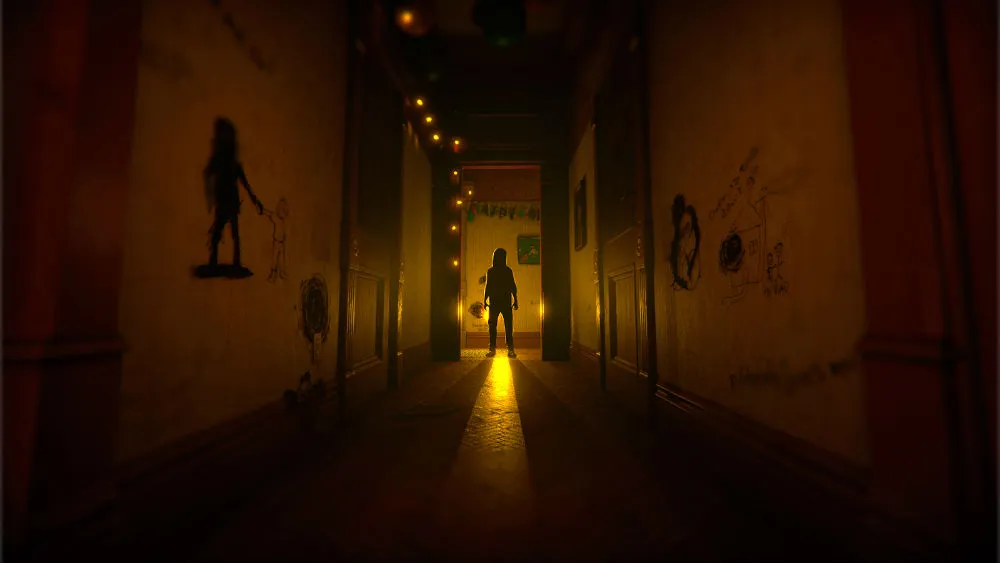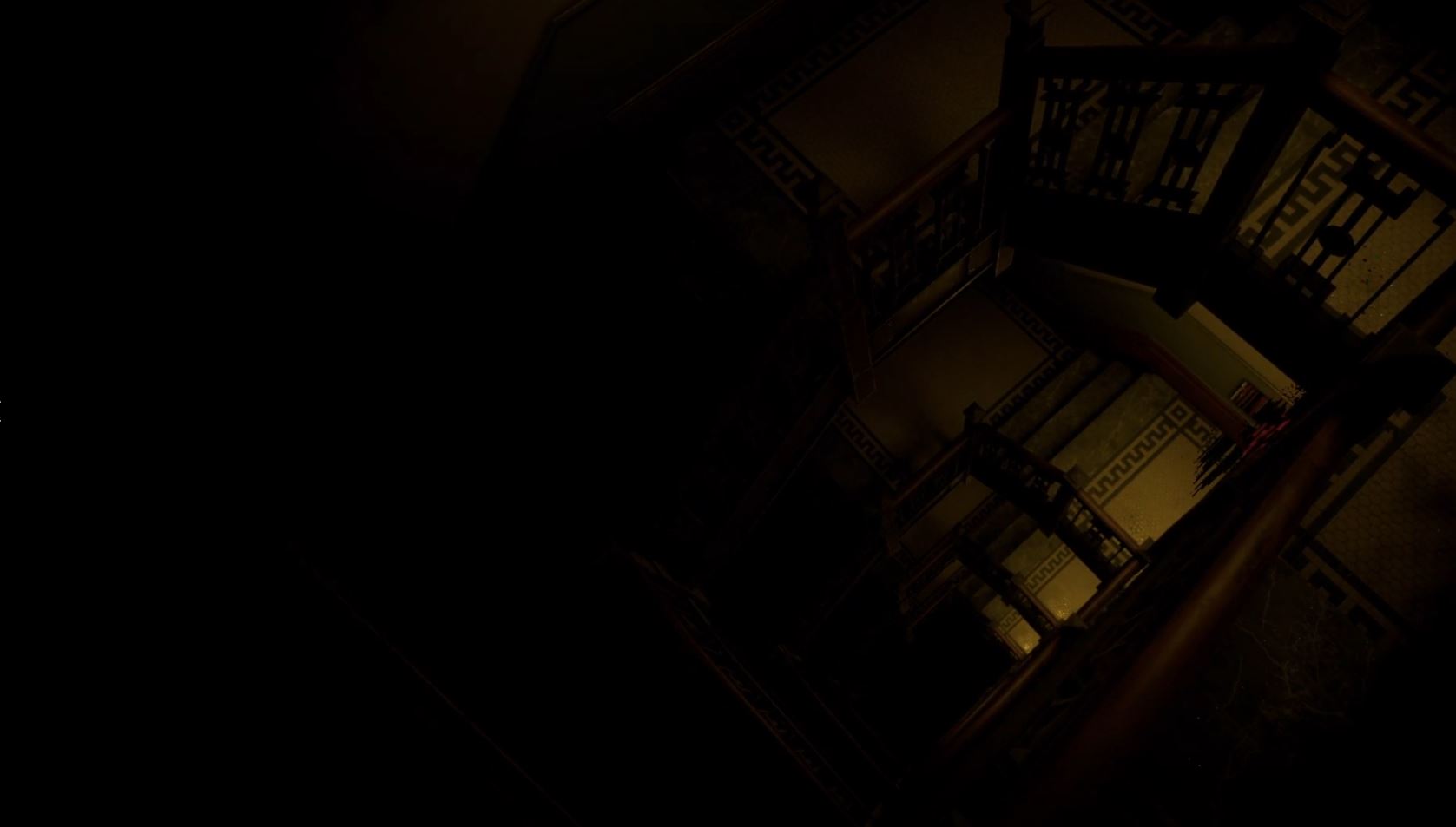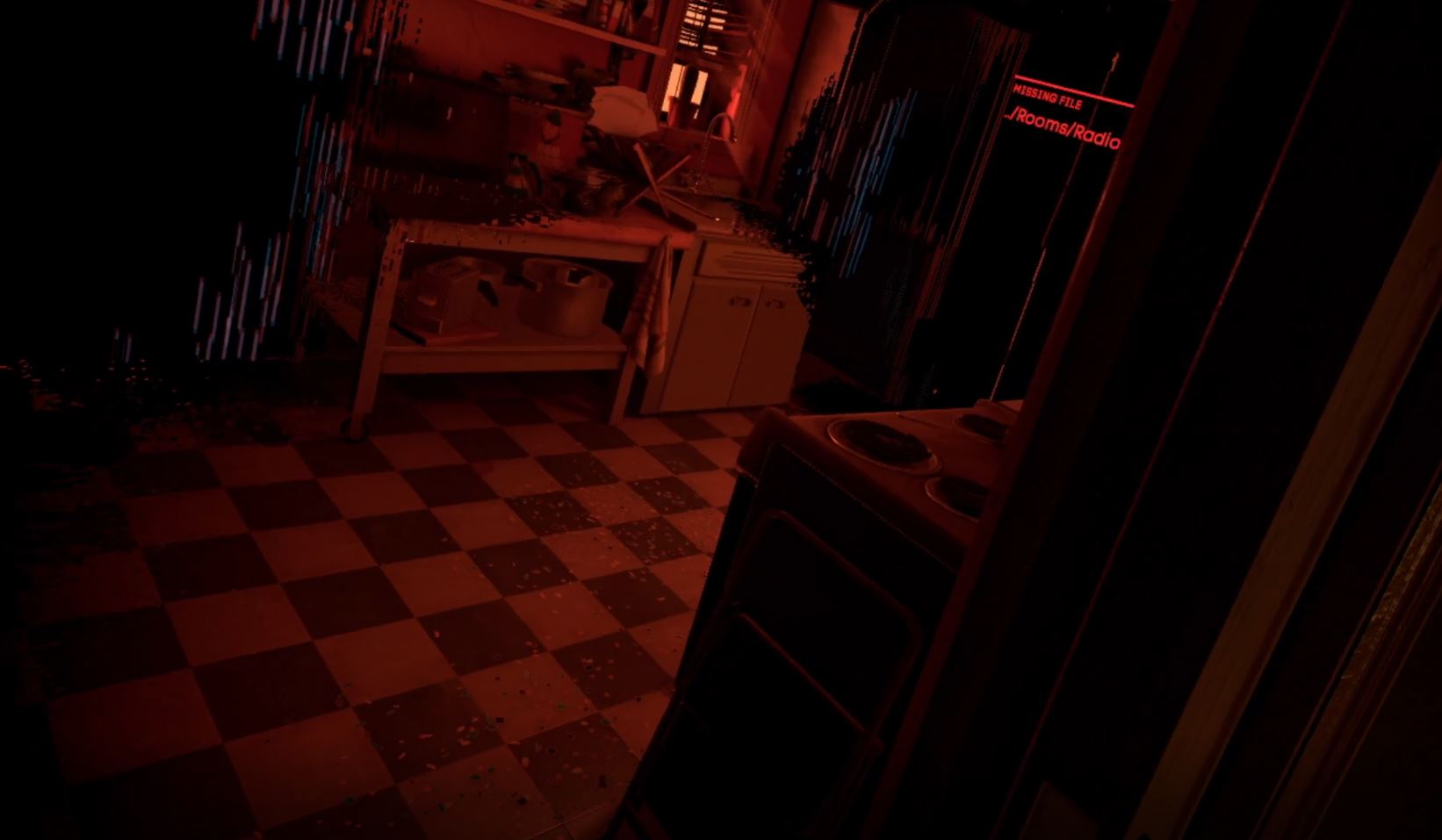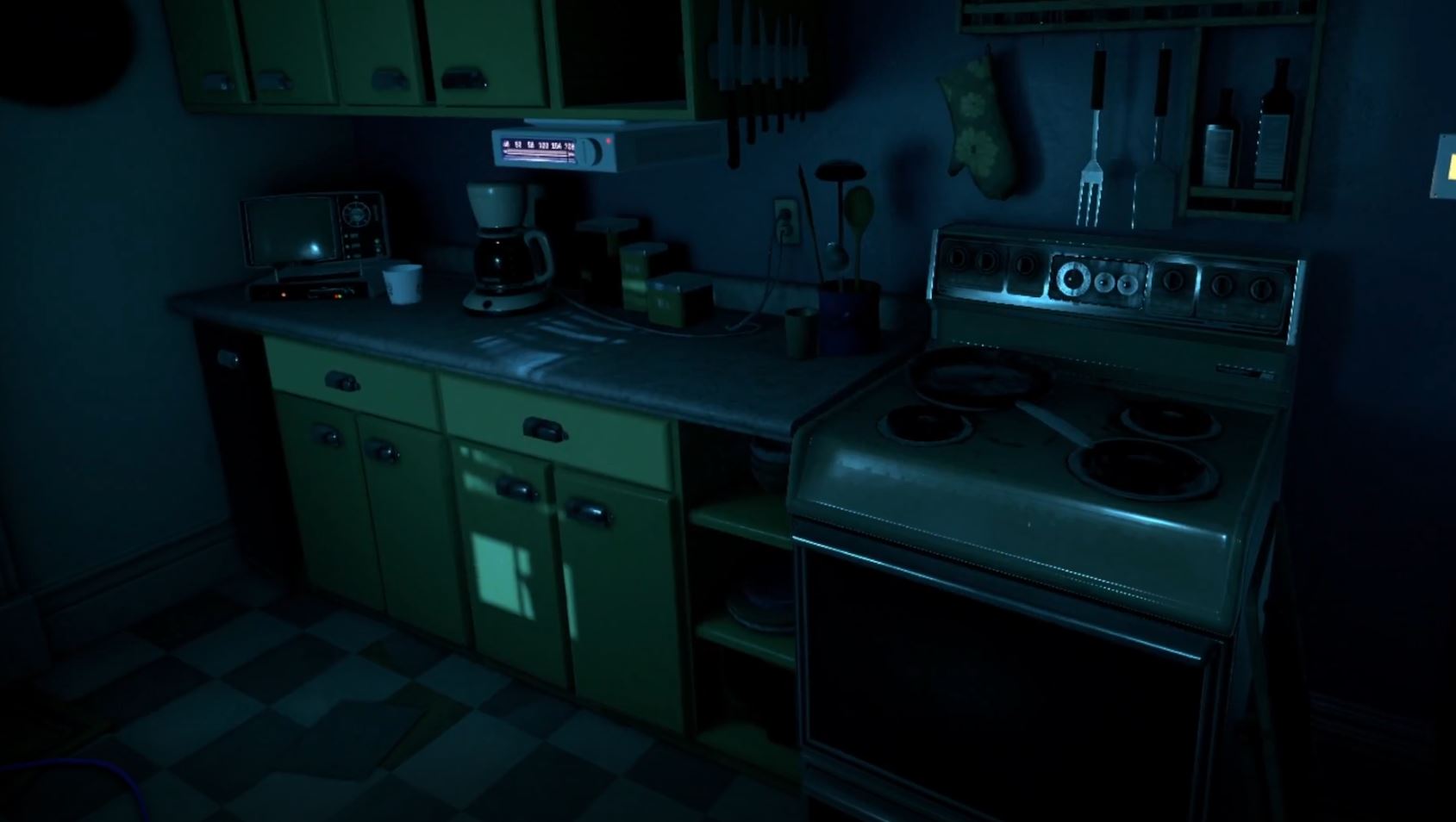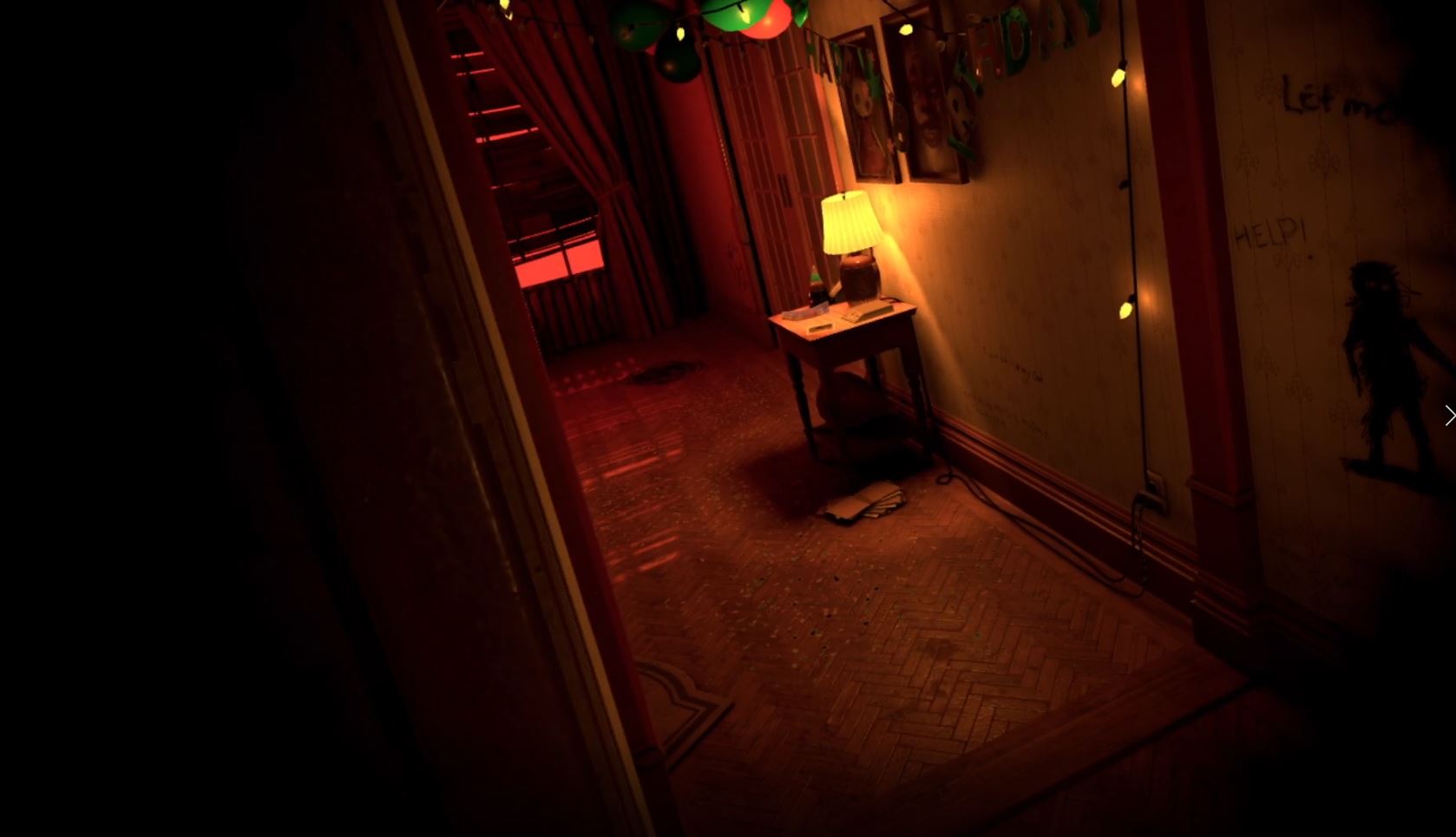During my latest hands-on demo with Transference from Ubisoft and Spectrevision last week, I got chills sent straight down my spine at two very specific moments. The first time, it was a classic jump scare. I was rummaging through drawers looking for clues when I turned around to see a dark, silhouetted figure of a small child at the end of the hall. It gasped and ran off. Small children in horror experiences always get me.
The second time though wasn’t intended as a jump scare at all and gave me chills just from the slow building anxiety and unsettling scenario I watched unravel. While standing at a table in the hallway, but in a different “dimension” of sorts, I heard the answering machine. It was a classic, “happy family” welcome message with mom, dad, and son chiming “Leave a message!” in unison with a dog barking at the end. Then the voicemail starts. It’s from a worried friend that hadn’t heard from the family that lived in that apartment in a long time, so she said she was calling the cops. After walking through the halls earlier, seeing the creepy writings on the wall, hearing the faint sounds of singing, crying, and yelling all mixed together, for some reason that worried voice really hit me.
You can watch some clips of my demo down below played on a Rift with Touch while seated; it’s the first time the game’s been capturable:
During my gameplay above you’ll notice things like FOV dimming and snap turning that were there for the demo to help combat motion sickness, but those features can be turned off in the full version of the game.
It felt real in a way that few VR games have felt real and as I think back to that moment, listening to the voicemail on the answering machine, I remember it as something I experienced — not as a game I played. Transference seems to be specifically designed to engineer that type of feeling.
In psychology, the concept of transference is described as a phenomenon in which you unconsciously redirect a person’s feelings for one person towards another person. In this game, you “play as yourself in the minds of a family, created using their collective brain data” according to the one-sheet provided after my demo. So, it’s almost like a simulation of a simulation.
As you can probably guess, in a lot of ways, Transference is an incredibly meta experience. The developers sourced VR for a lot of their inspiration on the project and it shows. When you play Transference you’ll switch between perspectives of Raymond Hayes, a brilliant scientist, Katherine Hayes, his wife, and Benjamin Hayes, their troubled son.
The general flow of gameplay in Transference revolves around switching back and forth between two versions of the same environment. One version feels more “real” almost like a memory, with things like family photos and relics of the past spread about, while the other version has a bit of an orange filter on itself and is full of glitches. It’s those glitches that serve as the core of the gameplay.
While exploring an area you may find something in one version of the world that can then be used in the other version to solve a glitch or repair a memory by switching back and forth. It’s a very linear game, but that linearity serves it well. The concept was to meld the film and gaming experience together and from what I’ve seen it feels like a success. Everything from the visuals and sound design to the pacing of its story and the way you interact with objects is extremely polished and well-done.
After playing so many VR horror titles, like Resident Evil 7, A Chair in a Room, Paranormal Activity, and more, I’ve learned the most important thing is to nail that sense of presence, to make the user feel like they exist inside the experience and Transference nails it.
My gut tells me a big reason why it works so well is because of the use of real human actors. Raymond Hayes talks directly to you, the player, at the beginning via a flat 2D monitor and, near the end, you see floating screens all around you playing family videos and showing Raymond talking once again. When you find photos in the world, they’re of the actual human actors. This aspect combined with the “digital simulation of consciousness” angle really does wonders for selling that suspending your disbelief.
Transference is set to release very soon on September 18th. The VR version of the game will be available on PSVR and PC VR headsets (such as the Rift, Vive, and Windows VR) as well as on PC, PS4, and Xbox One as a non-VR game. It will be $24.99 on all platforms and is estimated to last around 2-3 hours, or, “about the length of a movie” according to developers.
And as a surprise treat, today, August 20th, there is a free demo available on PS4 with both PSVR and non-VR support that tells a standalone story. It’s the same demo we played back at E3 2017 and you can try it right now.
Let us know what you think of Transference so far down in the comments below!

